Bearing Vibration Tester - Anderon Meter
Anderon Meter
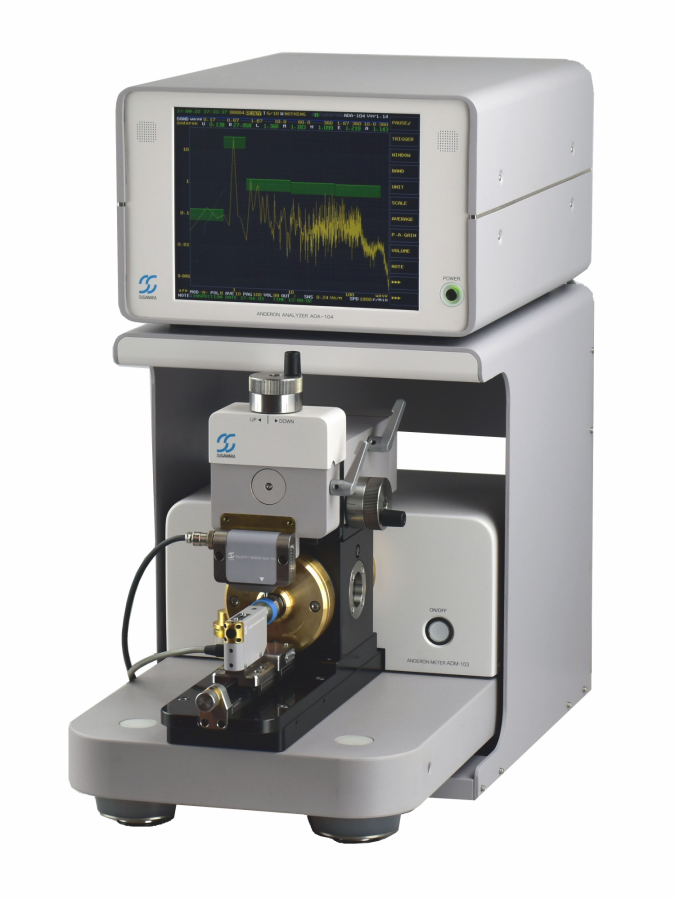
For reducing vibration and noise in rotatory equipment
An Anderon meter is a device for measuring bearing vibration characteristics. With the demand for energy conservation in all fields, the reduction of vibration and noise in rotary equipment, including motors, is becoming increasingly important. The most important determining factors in the vibration level of rotary equipment are the vibration characteristics of the bearings incorporated in the equipment. The prior screening of bearings, according to the vibration characteristics required by devices, is an extremely effective technique for achieving the following goals: the high efficiency of built-in motors, noise reduction in home appliances such as air conditioning units or vacuum cleaners, and the lifespan improvement of cooling blowers.
Rotating the inner bearing ring at 1800 r/min, vibration in the radial direction of the outer ring is detected with a velocity sensor and quantified in Anderon.
Anderon Meter - Video Guide
Anderon Meter - Features
- Accurately measures bearing vibration levels and quantifies this in Anderon units (*1) at high levels of reproducibility.
- By changing attachments, a single Anderon meter can be used to measure bearings ranging from ultra-small (with an inner diameter of 1 mm), to medium-sized (with an outer diameter of 100 mm).
- Conforms to the measurement conditions specified in ISO15242-2:2015.
- The use of a fluid dynamic spindle ensures background noise of 0.1 Anderon or less (= 0.77 μm/s or less).
- The proprietary Pusher (a device that applies axial load to the outer ring) does not require any specific skills by the person performing the measurements. The obtained data are always highly reproducible.
- The compact design allows for a table-top set-up.
(*1: The Anderon meter was proposed by Chaney et al. from the U.S. in a 1944 paper as a device for measuring the vibration of rotating bearings. The "Anderon measurement" and "Anderon value" defined in this paper are the most standardized concepts for evaluating bearing vibration characteristics.
Bearing Quality Control Through Use of Anderon Meter
Abnormal noise emanating from rotational equipment using rolling bearings is generated by the damage or contamination of those bearings. This type of noise can be prevented by screening bearings before incorporating them in the device. The reduction of device rejection rates through the prior screening of bearings has a major financial effect.
Measuring a few hundred bearings used in a device will clarify the standard for the truly tolerated vibration level of the bearings incorporated in that device.
Achieving increased precision
Grade the bearings by vibration characteristics (Anderon value + peak characteristics). Perform abnormal noise tests on devices incorporating these graded bearings, and study the correlation between test results and used bearings. This makes it possible for the bearing vibration characteristics required for a device to be determined with accuracy.
Vibration Detection Principles
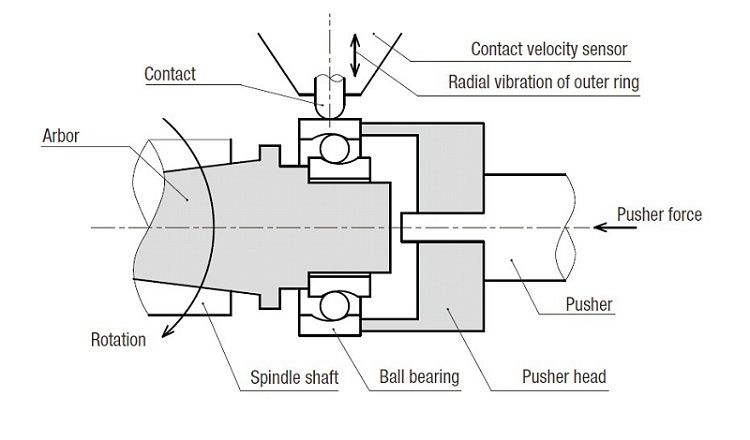
An Arbor, designed so that its tip matches the inner diameter of the bearing to be measured, is fitted to the spindle, and the spindle is rotated at 1800 r/min. The bearing inner ring is inserted into the Arbor tip, and the inner ring is rotated at 1800 r/min.
A Pusher Head, designed to match the outer diameter of the bearing to be measured, is fitted to the Pusher. By applying force on the outer ring in the axial direction with the Pusher, the rotation of the outer ring is stopped.
A situation is thus created where the inner ring rotates while the outer ring does not. By bringing a probe into contact with the surface of the outer ring, which is not rotating, the degree of vibration in the radial direction of the outer ring is detected.
System Configuration
An Anderon meter is composed of four elements and an Arbor and a Pusher Head, which are described as follows.
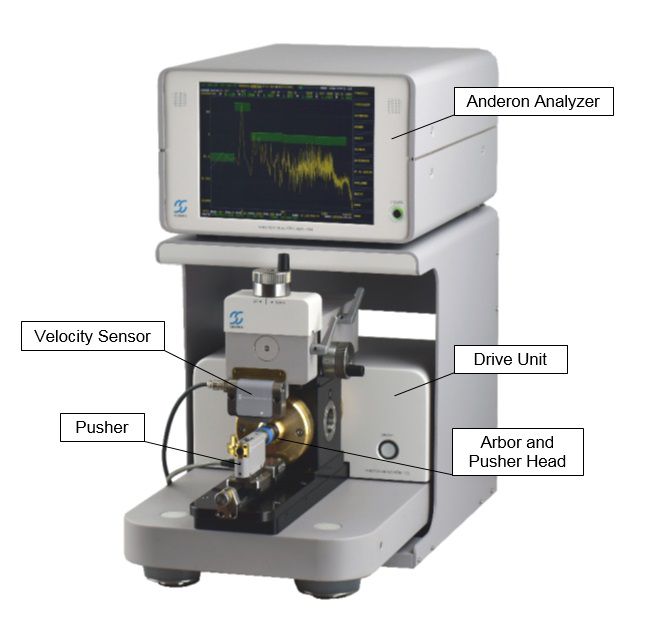
Drive Unit
Rotates the inner bearing ring using the Arbor.
Pusher
Applies axial load onto the outer ring using the Pusher Head, and stops the rotation of the outer ring.
Velocity Sensor
Brought into contact with the outer ring surface to detect vibration in the radial direction.
Anderon Analyzer
Applies an FFT analysis to velocity sensor signals and digitizes them for each band.
Arbor and Pusher Head
One Arbor is required for each bearing inner diameter size, and one Pusher Head for each outer diameter size.
Anderon Analyzer ADA Series
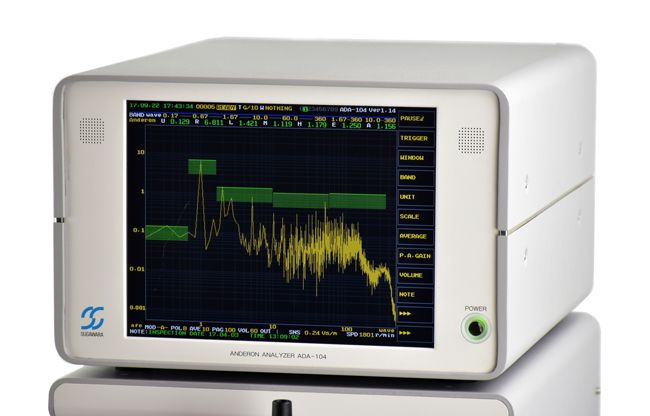
An analyzer for all Anderon Meters. FFT-based frequency analysis is applied to the velocity sensor signals, which are divided into seven frequency bands (editable), and digitized into Anderon units for each band. The Anderon value spectrum is displayed in the form of a graph. Through its wide dynamic range, it covers vibration ranging from ultra-fine vibration from miniature bearings to large-diameter bearings.
Contact Velocity Sensor ADS Series with Flat Frequency Response
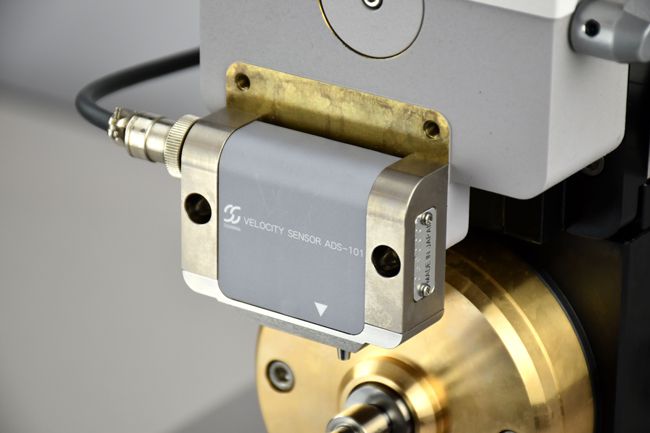
Velocity Sensor ADS-101
Contact-type velocity sensor specialized for measuring bearing vibration. High signal−noise ratio performance compared to acceleration sensors and laser Doppler vibrometers. The sensor's probe force is a mere 0.275 N (at 0.05 mm thrust). No needless force is applied to the bearing during measurement.
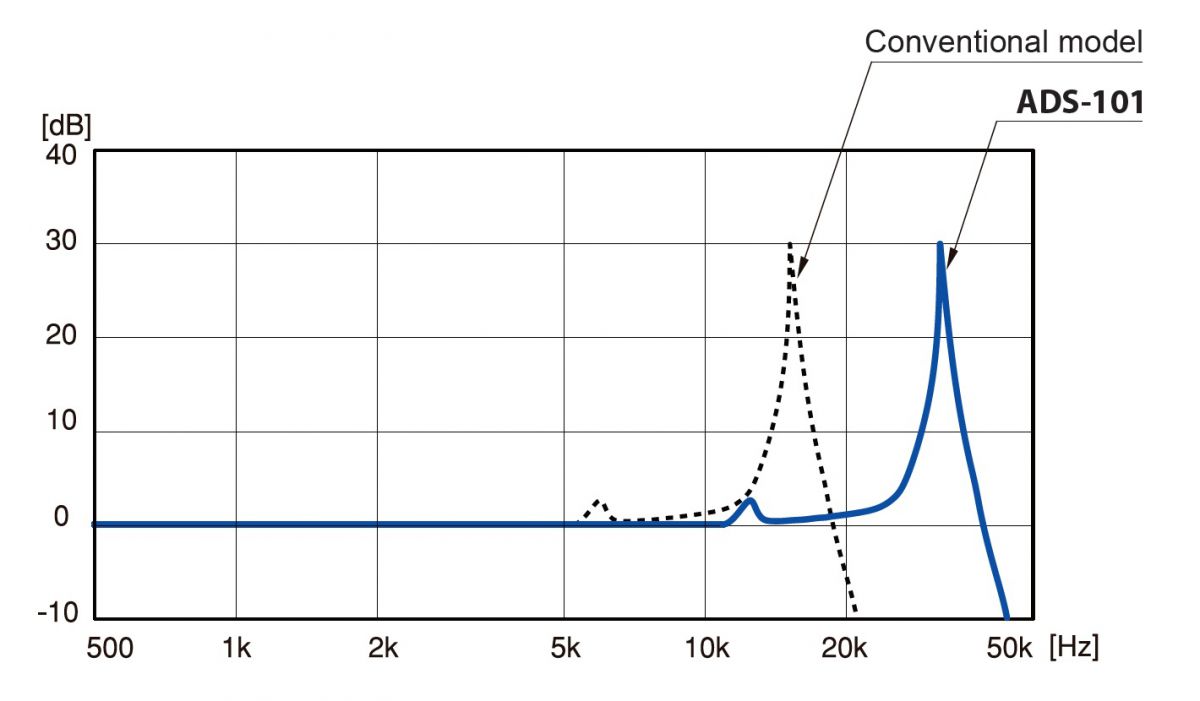
Realizes a completely flat frequency response up to 10 kHz, and has no resonance points within the Anderon measurement range.
Drive Unit ADM Series
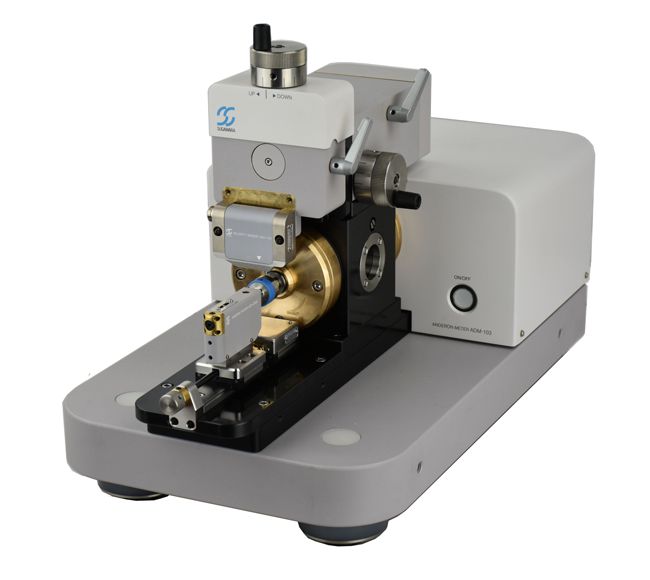
Uses a fluid dynamic (oil) spindle with a special structure creating exceedingly little vibration. Strict vibration control has been implemented, such as the use of a special gel material for vibration isolation and the direct-drive without the use of a drive belt, and background noise has been kept at 0.1 Anderon or less. Two drive unit models are available, depending on bearing size.
Pusher ADP Series
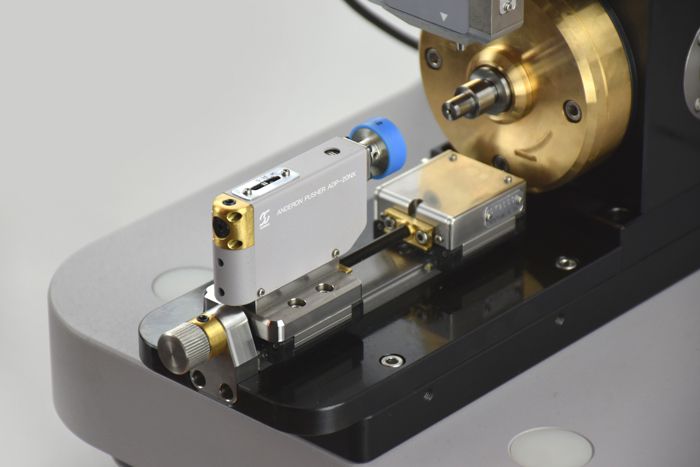
Guarantees highly reproducible measurements through its proprietary pusher shaft-holding structure, without requiring any specific skills for taking measurements. After configuring the pusher force and positioning the stopper in line with the bearing thickness, the configured pusher force is applied by either pushing using a force higher than the configured pusher force (ADP-20NX), or by operating the lever (ADP-200NX).
Specifications
| Bearing size range | Drive Unit ADM-104: Bearing inner ring bore 1 mm to outer ring diameter 100 mm Drive Unit ADM-709: Bearing inner ring bore 10 mm to outer ring diameter 220 mm |
|---|---|
| Bearing type range | Deep groove ball bearings Angular contact ball bearings Self-aligning ball bearings Tapered roller bearings Spherical roller bearings Cylindrical roller bearings (Drive Unit ADM-709-U1) |
| Measurement frequency bands | Seven standard bands (U, R, L, M, H, E, A Band) L band: 1.67 - 10.0 wave (50 - 300 Hz) M band: 10.0 - 60.0 wave (300 - 1800 Hz) H band: 60.0 - 360 wave (1800 - 10000 Hz) |
| Pusher force (axial direction) | Drive Unit ADM-104 ADP-20NX: max 20 N ADP-200NX: max 200 N Drive Unit ADM-709 ADP-200NS: max 200 N ADP-2KNS: max 2 kN |
| Pusher force (radial direction) | Two points, 100 N each (ADM-709-U1) |
| Spindle speed | Drive Unit ADM-104: 1800 r/min Drive Unit ADM-709: 300-3600 r/min, adjustable |
| Spindle bearing type | Fluid dynamic bearing (oil) |
| Spindle drive system | Direct drive |
| Tools for measurement | One Arbor per bearing inner ring bore One Pusher Head per bearing outer ring diameter |
| Power requirements | Anderon Analyzer ADA-105: 100-240 VAC, 50/60 Hz Drive Unit ADM-104: 100 VAC, 50/60 Hz Drive Unit ADM-709: 100 VAC, 50/60 Hz |
| Dimension (W × H × D) | ADA-105: 315 mm × 218 mm × 300 mm ADM-104: 300 mm × 386 mm × 486 mm ADM-709: 700 mm × 1336 mm × 1280 mm |
| Weight | ADA-105: 10 kg ADM-104: 80 kg ADM-709: 450 kg |